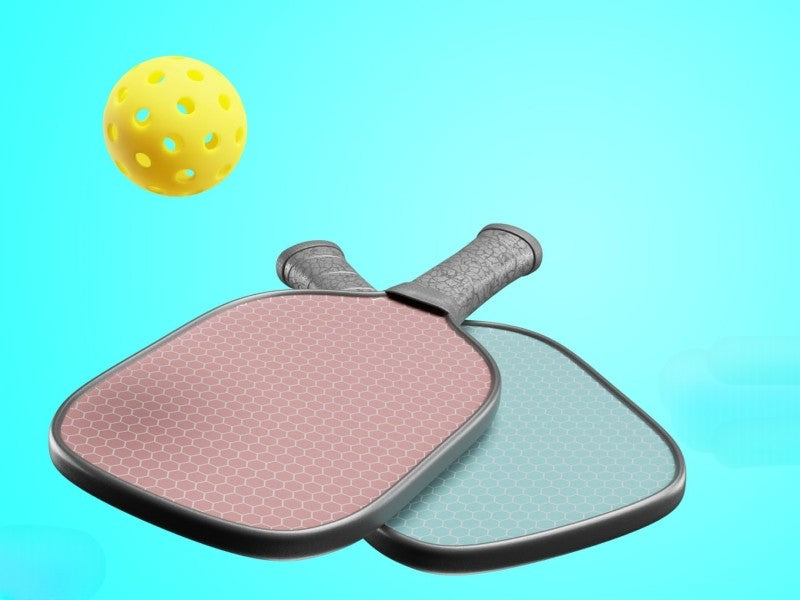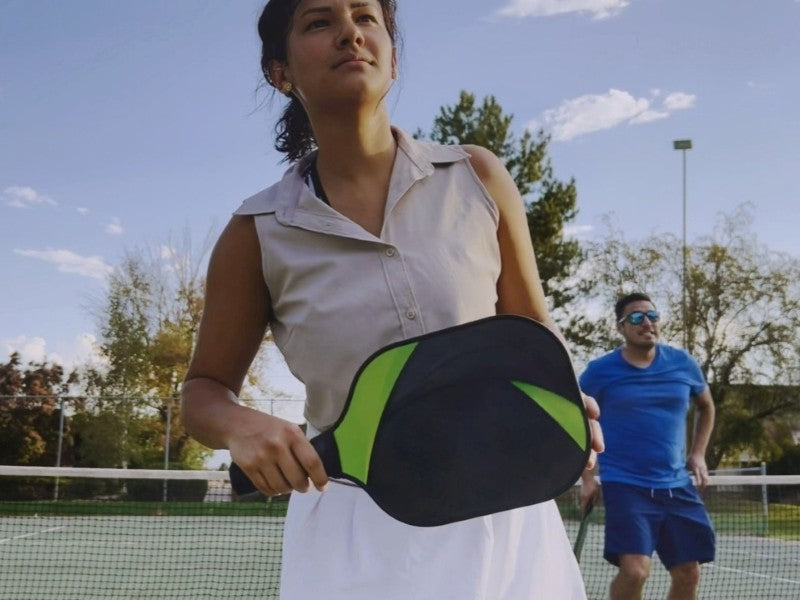Stacking in pickleball is one of the most discussed — and misunderstood — strategies in doubles play. While it can give teams a tactical advantage by keeping players in their preferred positions, it also introduces a level of complexity that can easily lead to errors. For many intermediate and even advanced players, stacking mistakes are not caused by a lack of skill, but by confusion over positioning, timing, and court awareness.
1. What Is Stacking in Pickleball — and Why Players Use It
Stacking refers to a doubles strategy where both players on a team position themselves on one side of the court (either left or right) before or after serving or returning, so that they can quickly shift into their preferred formations. The goal is simple:
· To keep the forehand of each player in the middle for stronger coverage.
· To maximize strengths, such as a player’s dominant side or net play.
· To maintain consistency in positioning throughout the match.
For example, if both teammates are right-handed, they might stack in a way that allows one player to always cover the right side (forehand toward the middle), while the other always covers the left.
Stacking can make a team appear synchronized and powerful — but only when executed correctly. Otherwise, it often leads to communication breakdowns, court confusion, and lost points.
2. Mistake #1: Poor Communication Between Partners
The Problem
The most common stacking issue is miscommunication. Players might not agree on who moves where after the serve or return, or one partner forgets the rotation plan entirely. When both move in the wrong direction or hesitate, the court is left exposed.
This confusion often happens because stacking involves non-traditional positioning — for example, both players might start on the same side of the court before play begins. Without clear verbal or visual cues, chaos can unfold within seconds.
How to Fix It
· Establish a system: Before each game, agree on who calls “switch” or “stay.” Use consistent keywords like “switch right,” “hold,” or “cross.”
· Practice communication drills: Try silent stacking drills where each partner must read body language instead of words. Then add verbal cues to strengthen coordination.
· Keep it simple under pressure: In matches, use the fewest words possible. Too much chatter can create hesitation — clarity beats complexity.
Pro players often have a rhythm to their stacking — they move fluidly without overtalking. You can build the same consistency by practicing the sequence repeatedly.

3. Mistake #2: Illegal or Incorrect Positioning During Serve/Return
The Problem
Stacking adds a layer of complexity to court positioning rules. Many players unknowingly violate pickleball’s positioning regulations during serve or return. The most frequent mistake? Standing on or beyond the centerline before the serve is struck, or failing to have both feet behind the baseline while serving.
Even small misalignments can result in faults and lost serves — something that’s especially frustrating in competitive matches.
How to Fix It
· Mark safe zones: During practice, use tape or cones to mark legal positioning spots for stacking. This visual aid helps build muscle memory.
· Remember the basics: The server must always serve from the correct side, behind the baseline, and the receiver must stand diagonally opposite.
· Shift only after contact: Don’t move to your stacked position until the serve or return has been hit — moving early can cause confusion or illegal positioning.
A smart stacking team looks seamless, not rushed. Learning to delay movement until after the ball is in play keeps your formation both legal and effective.
4. Mistake #3: Overcomplicating the Rotation
The Problem
Another common issue is making stacking more complicated than it needs to be. Some teams create overly detailed patterns that are hard to remember mid-game. This leads to hesitation, incorrect coverage, or both players ending up on the same side.
Remember: stacking is a tool, not a rule. If your positioning strategy makes you slower or less confident, it’s no longer helping your game.
How to Fix It
· Simplify your system: Stick with one or two stacking variations that match your team’s strengths (e.g., forehands in the middle, strong net player always right side).
· Build repetition: Drill one rotation until it becomes automatic. Only then add new patterns.
· Prioritize flow over perfection: Good stacking doesn’t have to look perfect — it just needs to maintain balance and coverage.
In short: less is more. Focus on executing one consistent formation smoothly rather than memorizing five that cause confusion.
5. Mistake #4: Forgetting Court Coverage Responsibilities
The Problem
When players stack, they often forget who covers which zones once the rally starts. For example:
· The forehand-dominant player might stay too far center, leaving the sideline exposed.
· The net player might drift backward after serving, opening up midcourt space.
The result? Opponents exploit the gaps for easy winners.
How to Fix It
· Define zones clearly: Before the match, agree on coverage areas. The right-side player should handle sideline dinks and drives; the left-side player should protect crosscourt angles.
· Use the “shadow technique”: In practice, have one player move while the other mirrors the motion. This improves spacing awareness.
· Watch professional doubles: Notice how elite players like Ben Johns and Anna Leigh Waters maintain constant triangular spacing — never too close, never too far.
Good stacking doesn’t just mean starting in the right place — it means staying balanced throughout every rally.
6. Mistake #5: Poor Transition from Serve/Return to Rally
The Problem
The transition from the serve or return into the rally phase is one of the most crucial — and error-prone — stacking moments.
Common mistakes include:
· Both players moving simultaneously toward the middle.
· Failing to recover in time for the third shot.
· Leaving the kitchen (non-volley zone) unguarded.
This usually happens when players focus more on getting to their “preferred position” than on reacting to the ball itself.
How to Fix It
· Prioritize the shot first, position second: Always hit a strong, deep serve or return before moving into stacked formation.
· Communicate post-shot cues: The serving player should call “go” or “switch” after contact, not before.
· Drill transitions: Practice serve-return–shift sequences with a focus on balance and quick recovery.
The goal is to move smoothly, not frantically. When stacking transitions become automatic, your team gains both confidence and control.
7. Mistake #6: Overstacking — Using the Strategy Too Often
The Problem
One of the most overlooked stacking mistakes is using it all the time — even when it’s unnecessary or counterproductive.
Stacking is meant to create positional advantages, but excessive stacking can actually slow down your movement, reduce shot variety, and make your play predictable.
Many teams, after discovering how effective stacking can be, begin applying it on every single serve and return. The issue is that constant shifting can cause confusion, fatigue, and awkward court coverage, especially during long rallies.
How to Fix It
· Choose moments strategically: Use stacking when it gives you a clear advantage (e.g., keeping a dominant forehand in the middle), not by default every rally.
· Evaluate your opponents: Against teams who struggle with crosscourt angles or backhands, stacking can work wonders — but if your opponents adapt quickly, vary your setup.
· Simplify rotations during pressure points: In tight scores (like 9-9), rely on your natural positions unless stacking is essential.
In short, smart stacking is selective stacking. Knowing when not to stack is as important as mastering how to stack.
8. Mistake #7: Ignoring Adaptability During the Match
The Problem
Stacking works beautifully when the plan fits your opponents — but no strategy survives unchanged. One major mistake is sticking rigidly to one stacking formation, even when it’s clearly not effective.
For instance, if your opponents start targeting your weaker player’s backhand or exploit the open side repeatedly, continuing the same stacking setup becomes a liability.
How to Fix It
· Adjust mid-game: If your stacking setup is leaving holes or limiting shot options, call a quick switch or revert to standard positioning.
· Communicate with awareness: Use short check-ins between points (“too open on left,” “switch next return”) to adapt dynamically.
· Learn both left and right formations: The best teams are flexible — they can stack either direction depending on serve side or opponent tendencies.
Adaptability separates good teams from great ones. Stacking should empower your team, not trap it in a rigid formation.
9. Mistake #8: Forgetting the Defensive Side of Stacking
The Problem
Most players think of stacking as an offensive strategy — positioning themselves to attack with forehands or control the middle. But a major error occurs when teams ignore how stacking affects their defense.
Poor defensive stacking can cause:
· Open crosscourt lanes.
· Weak positioning when defending third-shot drops.
· Slow responses to lobs or resets.
This often happens because both players become focused on moving to their “preferred” sides instead of preparing for defense.
How to Fix It
· Stay balanced before the opponent’s shot: Don’t overcommit to one side during transitions; stay centered until the ball’s direction is clear.
· Prioritize coverage over ideal position: Sometimes you’ll need to delay your stack to maintain solid defense — that’s a smart trade.
· Train defensive stacking: Practice drills where one partner defends while stacked, focusing on movement and recovery after dinks or drives.
A strong stacking team doesn’t just dominate offensively — it also knows how to stay compact and resilient when pushed onto defense.

10. Mistake #9: Lack of Practice and Real-Game Repetition
The Problem
The last — and perhaps biggest — stacking mistake is simply not practicing it enough.
Many players understand stacking conceptually but fail to integrate it into real match scenarios. As a result, when they attempt to stack during competition, they end up rushed, confused, or out of sync.
How to Fix It
· Start slow: Begin with simple serve-and-stack drills in practice. Build confidence before applying it in live matches.
· Use progressive training: Add complexity gradually — start with serve stacking only, then add return stacking, then full-rally transitions.
· Film your sessions: Recording your matches is one of the fastest ways to identify positioning mistakes and improve teamwork.
Consistency in stacking comes from repetition under pressure. The more natural it feels, the more effective it becomes.
11. How to Fix Stacking Problems Step-by-Step
Now that we’ve identified the nine most common stacking errors, let’s summarize practical steps to fix them systematically.
Step 1: Clarify Communication
Agree on verbal and visual cues before play — who calls “switch,” “stay,” or “cross.” Use consistent words to eliminate confusion.
Step 2: Simplify Your System
Limit yourself to one or two stacking variations at first. Avoid complex rotations until both partners are comfortable.
Step 3: Drill Transitional Movement
Set up serve-return drills where players practice moving into stacked formation smoothly. Focus on timing and recovery.
Step 4: Review Court Coverage
During practice, pause rallies and discuss who covers which zones. Use cones or markers if necessary to visualize spacing.
Step 5: Record and Review
Video analysis reveals hidden patterns — whether you’re leaving open areas or moving too early. Small corrections lead to big improvements.
These steps build muscle memory, teamwork, and clarity — the three pillars of successful stacking.
12. When (and When Not) to Stack in Pickleball
Stacking is powerful, but it’s not a one-size-fits-all tactic. Understanding when to use it — and when to avoid it — is key to long-term success.
When to Stack:
· When both players have opposite strengths (e.g., one is stronger at the net, one at baseline).
· When your forehands are stronger in the middle and help control rallies.
· When you face lefty-righty combinations — stacking can help avoid awkward overlap.
When Not to Stack:
· When opponents are exploiting open angles created by your shift.
· When stacking is breaking your rhythm or causing unforced errors.
· When communication is inconsistent — confusion leads to lost points faster than weak shots.
Remember: the goal of stacking is strategic simplicity, not chaos. Use it as a tool, not a rule.
13. Key Takeaways — Building Smart and Effective Stacking Habits
To wrap up, here are the most important lessons from this stacking deep dive:
1. Communication is everything. Even perfect formations fail without clear signals and teamwork.
2. Position legally and purposefully. Follow rules and move only after the ball is struck.
3. Don’t overstack. Use it strategically based on match situations.
4. Stay adaptable. Switch formations mid-game if opponents exploit your setup.
5. Balance offense and defense. Don’t sacrifice positioning for attack power.
6. Practice consistently. Make stacking part of your regular doubles drills.
When done right, stacking transforms your doubles game — not just by improving positioning, but by building synergy between partners. It’s a strategy that rewards awareness, patience, and coordination, rather than brute force.









Leave a comment
This site is protected by hCaptcha and the hCaptcha Privacy Policy and Terms of Service apply.